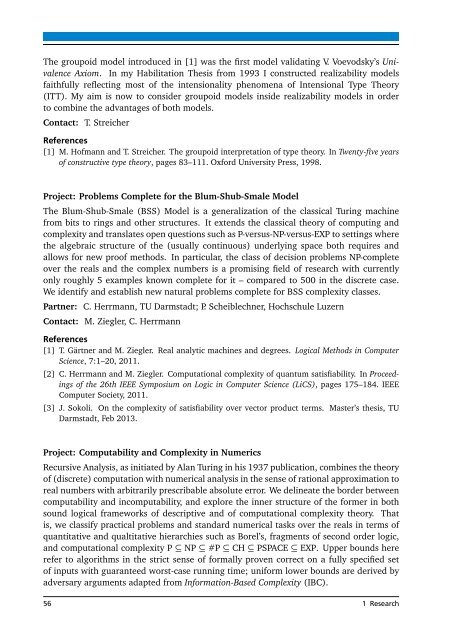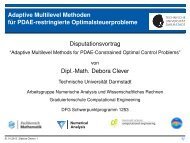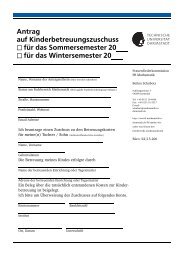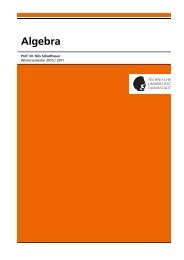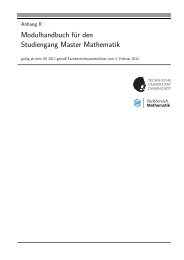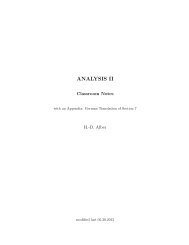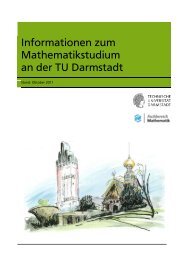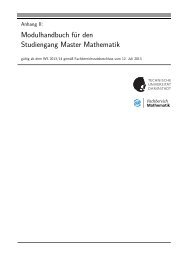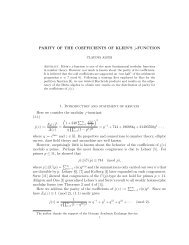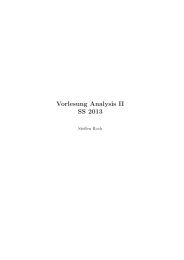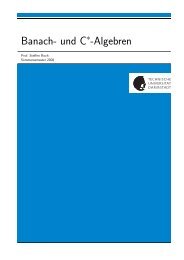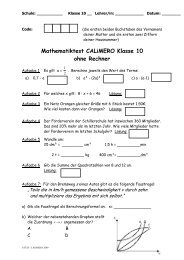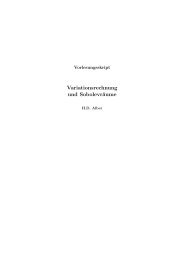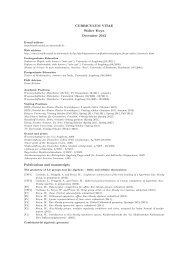Biannual Report - Fachbereich Mathematik - Technische Universität ...
Biannual Report - Fachbereich Mathematik - Technische Universität ...
Biannual Report - Fachbereich Mathematik - Technische Universität ...
Create successful ePaper yourself
Turn your PDF publications into a flip-book with our unique Google optimized e-Paper software.
The groupoid model introduced in [1] was the first model validating V. Voevodsky’s Univalence<br />
Axiom. In my Habilitation Thesis from 1993 I constructed realizability models<br />
faithfully reflecting most of the intensionality phenomena of Intensional Type Theory<br />
(ITT). My aim is now to consider groupoid models inside realizability models in order<br />
to combine the advantages of both models.<br />
Contact: T. Streicher<br />
References<br />
[1] M. Hofmann and T. Streicher. The groupoid interpretation of type theory. In Twenty-five years<br />
of constructive type theory, pages 83–111. Oxford University Press, 1998.<br />
Project: Problems Complete for the Blum-Shub-Smale Model<br />
The Blum-Shub-Smale (BSS) Model is a generalization of the classical Turing machine<br />
from bits to rings and other structures. It extends the classical theory of computing and<br />
complexity and translates open questions such as P-versus-NP-versus-EXP to settings where<br />
the algebraic structure of the (usually continuous) underlying space both requires and<br />
allows for new proof methods. In particular, the class of decision problems NP-complete<br />
over the reals and the complex numbers is a promising field of research with currently<br />
only roughly 5 examples known complete for it – compared to 500 in the discrete case.<br />
We identify and establish new natural problems complete for BSS complexity classes.<br />
Partner: C. Herrmann, TU Darmstadt; P. Scheiblechner, Hochschule Luzern<br />
Contact: M. Ziegler, C. Herrmann<br />
References<br />
[1] T. Gärtner and M. Ziegler. Real analytic machines and degrees. Logical Methods in Computer<br />
Science, 7:1–20, 2011.<br />
[2] C. Herrmann and M. Ziegler. Computational complexity of quantum satisfiability. In Proceedings<br />
of the 26th IEEE Symposium on Logic in Computer Science (LiCS), pages 175–184. IEEE<br />
Computer Society, 2011.<br />
[3] J. Sokoli. On the complexity of satisfiability over vector product terms. Master’s thesis, TU<br />
Darmstadt, Feb 2013.<br />
Project: Computability and Complexity in Numerics<br />
Recursive Analysis, as initiated by Alan Turing in his 1937 publication, combines the theory<br />
of (discrete) computation with numerical analysis in the sense of rational approximation to<br />
real numbers with arbitrarily prescribable absolute error. We delineate the border between<br />
computability and incomputability, and explore the inner structure of the former in both<br />
sound logical frameworks of descriptive and of computational complexity theory. That<br />
is, we classify practical problems and standard numerical tasks over the reals in terms of<br />
quantitative and qualtitative hierarchies such as Borel’s, fragments of second order logic,<br />
and computational complexity P ⊆ NP ⊆ #P ⊆ CH ⊆ PSPACE ⊆ EXP. Upper bounds here<br />
refer to algorithms in the strict sense of formally proven correct on a fully specified set<br />
of inputs with guaranteed worst-case running time; uniform lower bounds are derived by<br />
adversary arguments adapted from Information-Based Complexity (IBC).<br />
56 1 Research


